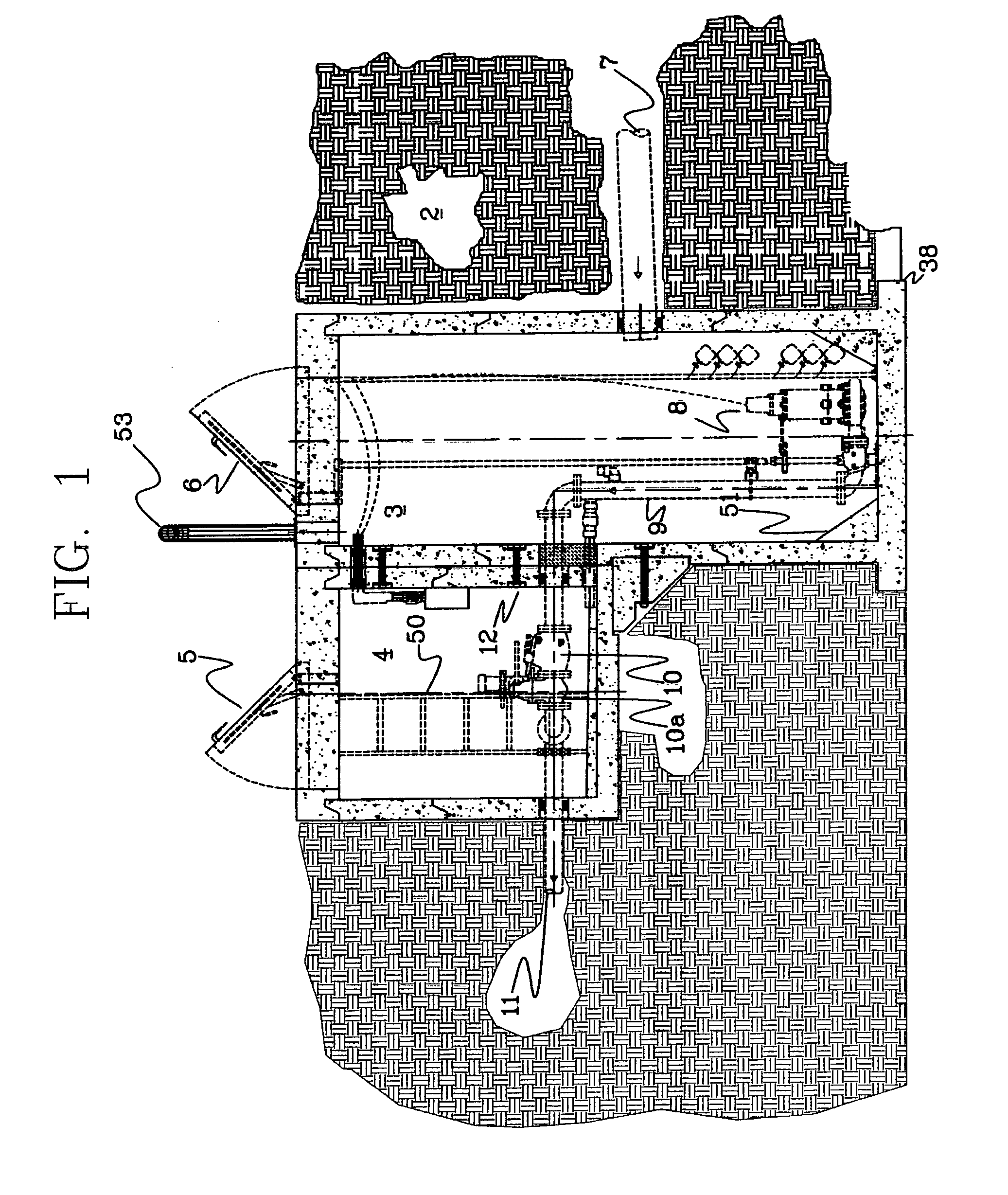Unitary concrete pumping station for aqueous waste submersible pumping applications
a technology of unitary concrete and submerged pumping, which is applied in the direction of service pipe systems, machines/engines, liquid fuel engines, etc., can solve the problems of affecting the installation efficiency of the system, and reducing the time required for installation. , to achieve the effect of improving the installation of the system and reducing the time required for installation
- Summary
- Abstract
- Description
- Claims
- Application Information
AI Technical Summary
Benefits of technology
Problems solved by technology
Method used
Image
Examples
Embodiment Construction
[0021]Looking now specifically at the drawings particularly useful in describing this invention, but by which I am not limited, FIG. 1 is a basic and simple form of the unitary pumping station useful in moving waste fluids from one level to another. In this showing 1 is the unitary pumping station as a whole shown beneath the ground 2. A squared, fluid receiving container is shown as 3 and a smaller, squared valve container shown as 4. Each of these two containers may have a man-hole access point as shown as 5 and 6. In the fluid receiving container the fluid enters in at a certain level through inlet pipe 7. As the fluid rises up in this container a submersible pump 8 pumps this fluid up into the smaller valve container 4 through a pipe 9. This fluid passes through an integral check valve 10 and then through a gate valve 10a and exits through pipe 11 further into the system. The entire system is a unitary pumping station with fluid entering at a lower level and being pumped into a ...
PUM
 Login to View More
Login to View More Abstract
Description
Claims
Application Information
 Login to View More
Login to View More - R&D
- Intellectual Property
- Life Sciences
- Materials
- Tech Scout
- Unparalleled Data Quality
- Higher Quality Content
- 60% Fewer Hallucinations
Browse by: Latest US Patents, China's latest patents, Technical Efficacy Thesaurus, Application Domain, Technology Topic, Popular Technical Reports.
© 2025 PatSnap. All rights reserved.Legal|Privacy policy|Modern Slavery Act Transparency Statement|Sitemap|About US| Contact US: help@patsnap.com



